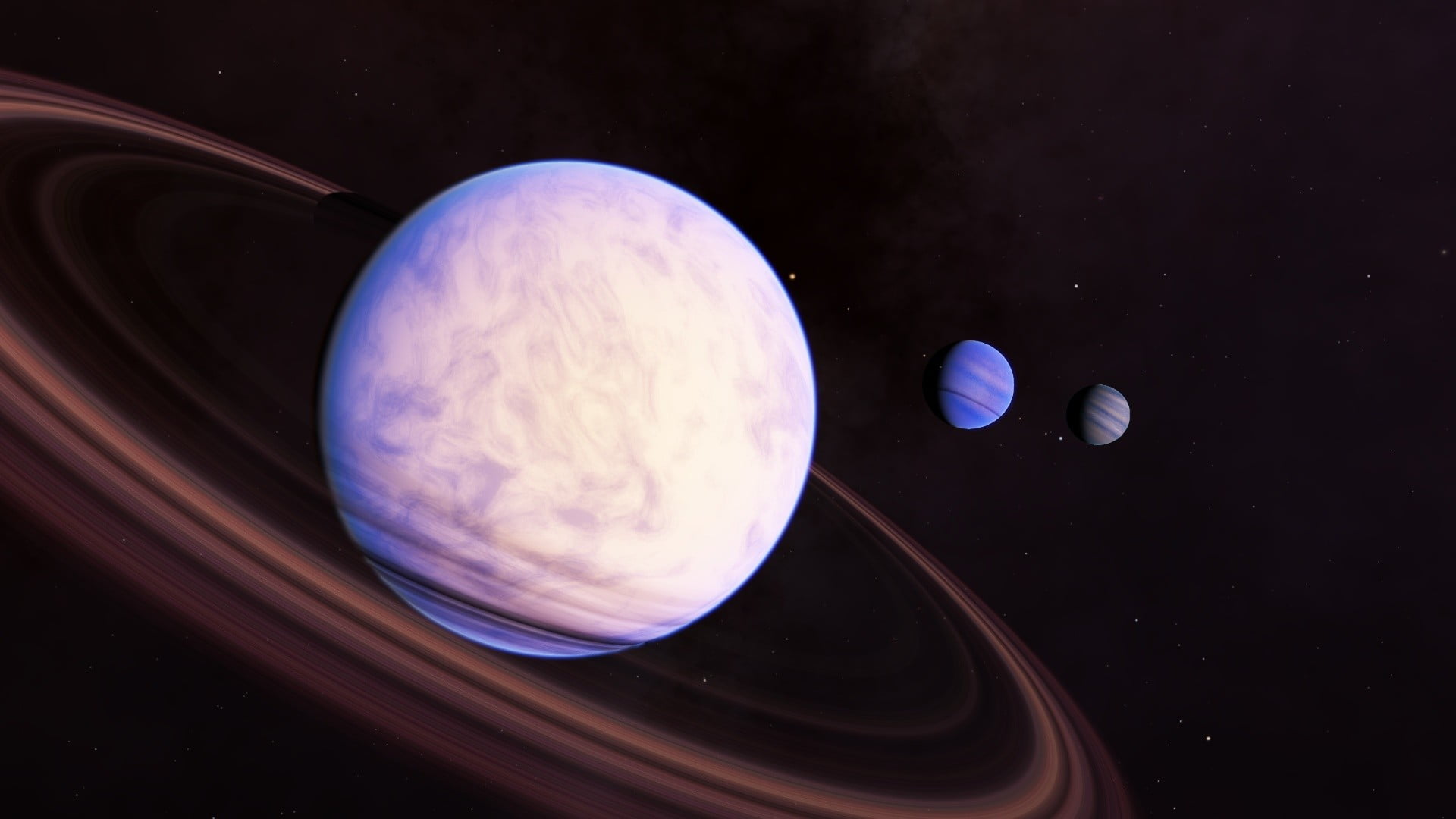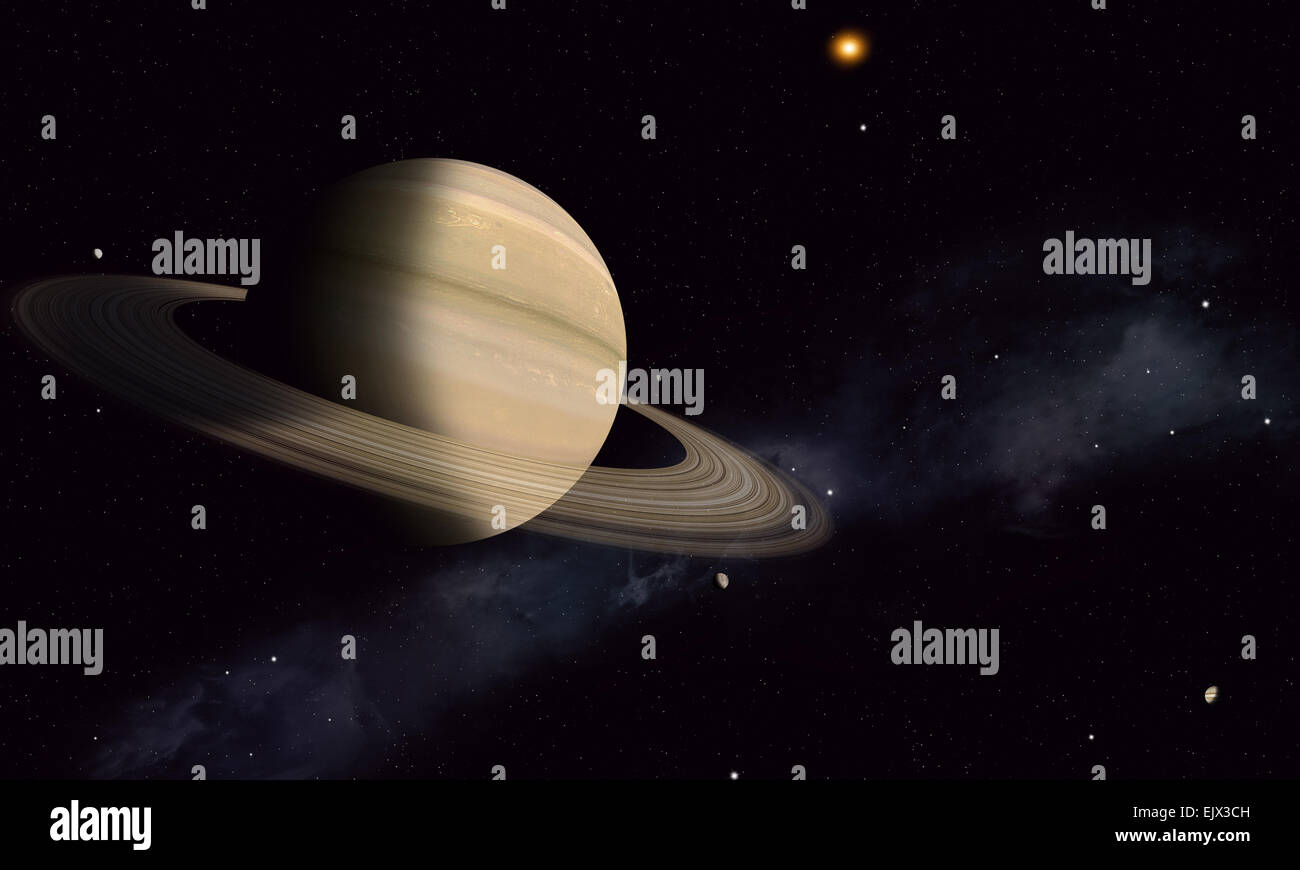This gas giant is famous for its beautiful rings as well as being the second biggest planet in our solar system

Gas Giant Saturn: The Second Biggest Planet in Our Solar System


Saturn, the sixth planet from the Sun, is one of the most captivating celestial bodies in our solar system. This gas giant, famous for its beautiful rings, holds a prominent position due to its impressive size. Let’s explore the intriguing qualities of Saturn and delve into the wonders that make it a fascinating subject of astronomical study.
Saturn’s reputation as the second biggest planet in our solar system is well-deserved. With a diameter of about 116,464 kilometers, Saturn boasts a volume that could hold approximately 764 Earths within its boundaries. Its mass is around 95 times that of Earth, making it significantly denser than the majority of gas giants.
The most distinctive feature of Saturn is undoubtedly its mesmerizing ring system. Spanning over 280,000 kilometers wide, these rings encircle the planet in breathtaking splendor. Made up of countless particles of ice and rock, these rings are divided into numerous distinct sections. With a multitude of intricate patterns and gaps, they create a captivating sight that never fails to captivate astronomers and stargazers alike.
Saturn’s rings are composed of ice particles ranging in size from tiny grains to massive boulders. Researchers believe that they may be remnants of a moon or a comet that disintegrated due to gravitational forces or a massive collision. Their stunning appearance is a result of the interplay between the planet’s gravitational pull and the orbiting particles.
Saturn has an impressive collection of moons, numbering over 80. Among them, Titan, Saturn’s largest moon, stands out as one of the most intriguing destinations in our solar system. With its dense atmosphere and flowing rivers of liquid methane, Titan possesses a diverse landscape that resembles Earth in some respects. Scientists have even speculated that Titan could potentially support some forms of primitive life.
Furthermore, Saturn’s other moons offer unique insights into the dynamics and geological processes of the planet. Enceladus, for example, is known for its fascinating erupting geysers, which release icy particles and liquid water into space. This discovery has raised the possibility of subsurface oceans and potential habitats for microbial life.
Studying Saturn provides valuable insights into the formation and evolution of our solar system. It offers scientists an opportunity to gain a deeper understanding of the mechanisms behind the birth and development of gas giants. By studying its rings, moons, and atmosphere, researchers can unravel the secrets of planetary formation and the intricate interplay between celestial bodies.
In conclusion, Saturn, the second biggest planet in our solar system, stands out not only for its remarkable size but also for its spectacular ring system. Its captivating appearance and intriguing moons make it a constant source of fascination for astronomers and space enthusiasts alike. The ongoing exploration of Saturn will undoubtedly continue to unveil exciting discoveries, fueling our curiosity about the vast wonders of our universe.
Source: Wallpaperflare
Tags
Share
Related Posts
Quick Links
Legal Stuff

